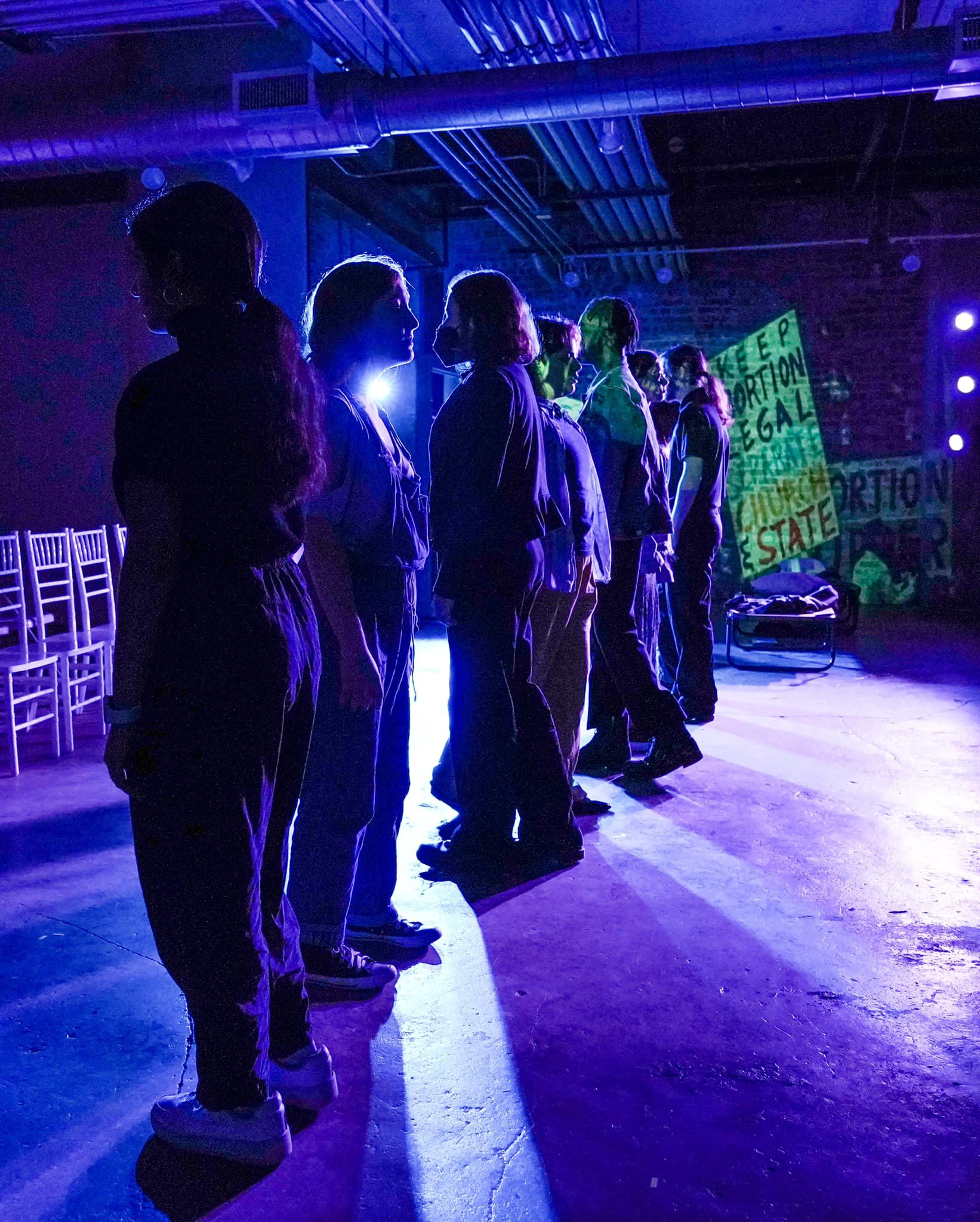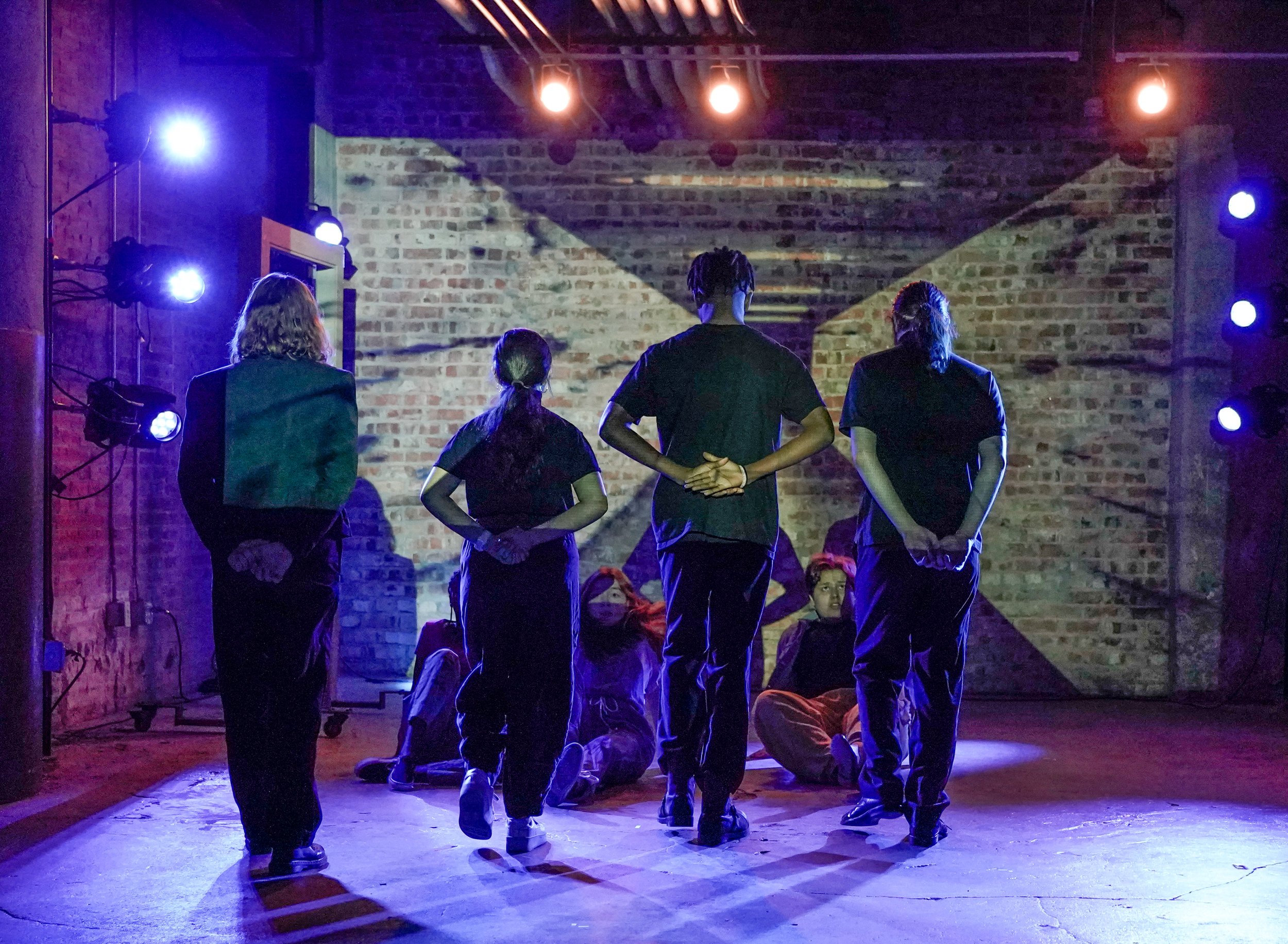Women of Troy @ Cry Havoc Theater Company
—Jan Farrington
For eight years, the teenage actors of Cry Havoc Theater Company have upheld their founder’s idea: that “kids” could be vital voices for change, ask the hardest questions of the time, build bridges, get important conversations going.
When Mara Richards Bim founded Cry Havoc in 2014, she envisioned it as a project, a trial run for a new kind of youth theater, moving away from musicals and fairy tales to plays about gun violence, gender roles, immigration. The company became a phenomenon. Now Bim and her family are moving out of state, and she and the board have chosen to close this door—with the hope that their young actors will open new ones and carry their skills forward, continuing to “devise” their own unique theater productions.
All the same, we’re sorry to see them go.
In classic Cry Havoc mode, Women of Troy grapples with another hot-button topic, that of women’s rights, abortion, and the suddenly changing laws around this divisive issue. The script, created/devised in a collaborative effort of the young actors and adult advisors, will (as expected) change few minds…but it might crack them open to new thoughts. In questions during a post-show talkback, some of the young actors mentioned the impact of the SCOTUS decision on Roe v. Wade, which came in the midst of their rehearsals for the show.
As in the playwright Euripides’ masterpiece The Trojan Women (which, hilariously, won second prize in Greece’s major theater competition…in 415 B.C.), the story focuses on a group of imprisoned women. But these are not the queens and noblewomen of defeated ancient Troy; they are our contemporaries, women thrown into jail in our era for having an abortion, or for political protests related to the new laws in force—this time, in the town of Troy, Texas.
The women are guarded by black-clad zealots (kudos to costume designer Jessie Wallace’s stark suits, in contrast to the prisoners casual everyday clothing) who seem inflexible in their belief that these women are criminals. It sets up as a kind of Women’s March versus Handmaid’s Tale situation—and initially, we have a difficult time envisioning any shifts in the hidebound positions on each side.
Ritual movement plays a role in bringing emotions to the surface. At the opening and thereafter, the cast of eight engages in carefully orchestrated, dance-like gatherings at center stage. Deep breaths, reaching hands, heartbeat patterns beaten on chests—as the play goes on, movement accumulates into meaning. In some “dances” the guards join; at the end, small flames shine out of the darkness in the hands of both prisoners and guards. “You cannot change the way I think,” says one character—but is that entirely true? Guards and prisoners come to share stories of loss, begin to recognize humanity in the person across from them. There is no resolution…but there is something that begins to look like connection.
The stage space, a gallery on the basement level of the Southside on Lamar building, has huge pillars that accidentally feel very Greek. Lighting by Courtney Amaro contrasts the stark prison-cell “real” environment, and the dim, deep-toned scenes of movement, which feel out of reality. Claire Carson’s sound design (including the echoing, unseen voices of the “powers” who will judge them), Nigel Newton’s original music, and Jenna Jo Pawlicki’s projections lend texture and emotion without intruding on the action too much.
I won’t reveal much of the story, but it begins with a focus on young Andromache, a wife whose diagnosis that her child will be born disabled (essentially without a brain and unable to survive) has led her to an abortion. As in the ancient play, she is the wife of Hector. “You don’t deserve to be here,” says Hekabe, the de facto leader of the activist group who’ve come to rescue her. “I am not a symbol or a tragic victim,” she replies. “I deserve what I get.” She “burns” for motherhood, and believes her abortion was a terrible choice—yet the correct thing to do. As stories are exchanged and past events revealed, characters on both sides feed into a growing concept: It’s not that simple. Is a woman a vessel, or an independent being? Is this a baby or a clump of cells? Thou shalt not kill—but the already living have rights too, don’t they?
The cast, playing modern characters, carry the gravitas of the old Greek names: Hekabe, Cassandra, Patroclus, Menelaea and more. They deliver striking and passionate scenes, especially where two opposed characters come face to face. Some cast members were ones I had seen before. Others were new—some in high school, others heading for college. Here (in alphabetical order) are the eight players, beautifully directed by Sheridan Singleton: Ryann Beckham/Cassandra…Carter Castaneda/Hekabe…Reginald Compton/Talthybius…Hayden Elliott/Patroclus…Audrey Hunter/Menelaea…Serena Lakhani/Iphigenia…Olivia Stanley/Andromache…Emma Taylor/Polyxena.
There are two more Cry Havoc shows on tap for the upcoming months, and then the company’s run will end. Thanks, Mara Richards Bim. Thanks to all the adults who worked with these vibrant young actors—and showed the North Texas theater community how much was possible from voices who aren’t (most of them) old enough to vote.
WHEN: Through July 17
WHERE: Basement Gallery/Southside on Lamar, 1409 Botham Jean Blvd., Dallas
WEB: cryhavoctheater.org


